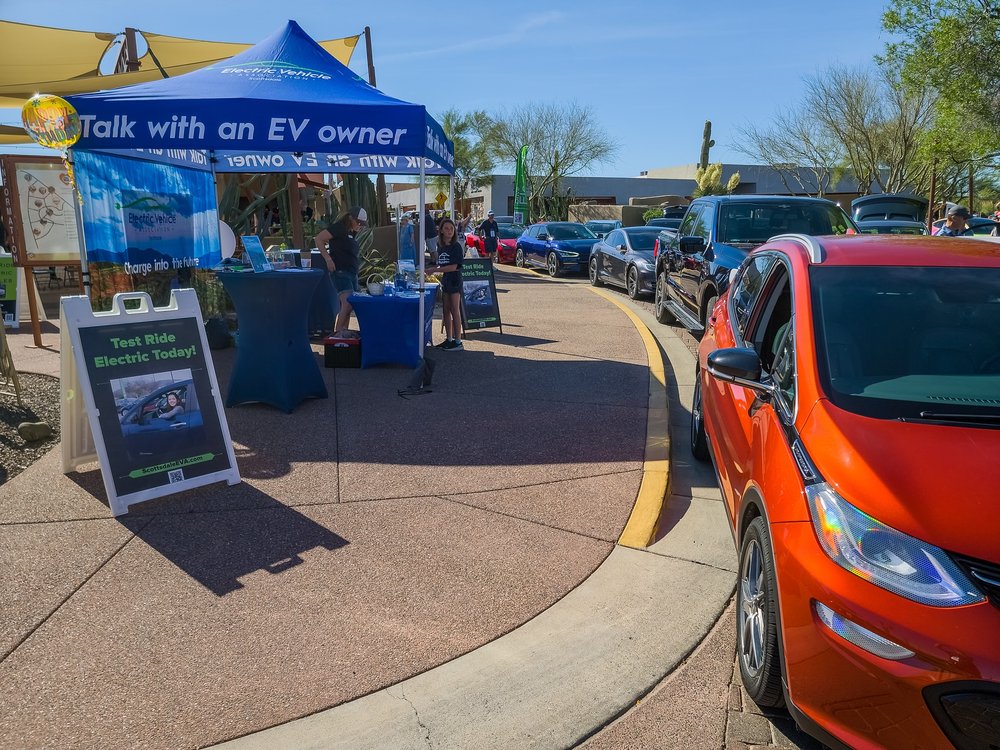Our nemesis, range anxiety
Many gas drivers are reluctant to try a plug-in vehicle, and often they are not timid about letting us know it. The most common reason is that they are afraid the battery charge will run out unexpectedly and they will have to wait for a charge–perhaps a tow too, if it was very unexpected. They have heard that range varies (true, that) so they don’t know exactly how far a plug-in will go before this happens.
As we plug-in drivers know, once they own a plug-in, they will quickly learn what their car is capable of and their range anxiety will be replaced with range confidence. But they have to be willing to try one to get to that point. We need a simple way to explain why they will not run out of charge unexpectedly.
A simple solution
Simple is important. While a fully-informed approach can work, it is very time-consuming to impart all information related to range–and for many people, a long complicated discussion paradoxically increases their range anxiety.
We can show gas drivers how to drive many of their miles on electricity, yet still be able to drive anywhere they like without ever draining the battery or waiting for a charge with just two very simple pieces of information:
- The range they can count on getting from their plug-in after charging overnight
- They can still use gasoline for trips longer than #1 (yes, it’s allowed!)
One-car families get a PHEV
If they only have one car, this is astoundingly easy–they just pick a plug-in hybrid like the Chevrolet Volt, Toyota Prius PHEV, Ford C-Max or Fisker Karma. They will be able to drive most of their miles on electricity, but do not have to make any changes to the types of trips they make or the planning that goes in to them. They will never get “stuck”. This may seem obvious to us, but most Americans are still confused by the differences between BEVs and PHEVs, so this needs to be explicitly pointed out.
We should still give them a realistic idea of how many electric miles they are likely to get from the car. They will be disappointed if the car switches to gas less than halfway to work every day, so they should choose a PHEV with enough range to cover most of their daily driving. But because the switch to gasoline is automatic, you can give them a “likely” number (say, the EPA rating) rather than a worst case number, and they will have nothing to fear.
Multi-car families can consider BEVs, too
If they are in the large majority of Americans households that have multiple cars, they can also consider BEVs. Just like a PHEV driver, they will still have access to gasoline propulsion; it will just be in a different car. So they too can go anywhere and never have to wait for a charge; they can just switch cars on long-distance days. Of course they should choose a BEV with enough range to make sure the car-switching doesn’t happen often. And they need to know exactly how far the BEV can go to make sure they never run out of charge. But again, we want to do this simply.
Most manufacturers throw out a range number like “100 miles”. Of course 100 miles is possible in most of them, but no range-anxious potential customer is happy knowing how far they can get on a good day under certain driving conditions. They want to know how far they can count on–the minimum range. Marketing departments don’t want to discuss a number that might be smaller than the numbers that the competition are throwing out, so it is up to us owners to address it.
Determining minimum range
If they’re considering a BEV you own, you probably know enough about the car’s capabilities to give them a very accurate answer. If they’re asking about a car you don’t drive, you can’try the following rough rule of thumb shown in the chart below: 2/3 of the EPA range (for cars that haven’t been rated yet, try 1/2 of the “advertised” range; that’s rougher as not all manufacturers use the same metrics). That’s a very steep discount, but we’re looking for the worst case–we want to allow for speeding, bad weather, speeding during bad weather, degradation over time, etc. You may be able to adjust this number if you know something about their driving habits.
Most drivers overestimate their daily driving, so no matter what number we tell them, many will initially say the range is too short. We can help overcome this by naming local places they could go within that range; they will often be surprised. But if it looks like they really do need more range to cover the majority of their daily trips, or they are concerned about surprise trips, we should steer them towards a BEV with more range or a PHEV.
While we don’t want to complicate the discussion yet, this is a good time to mention that as they learn the car, they will be able to double that minimum range on some trips if they want to.
 The payoff
The payoff
Like any really simple solution, this won’t work for everybody. That’s OK as they aren’t making enough plug-ins for everybody anyway. But it’s easy to try, and it should work for many.
Once given confidence that a plug-in can work for them and some time to get used to the idea, those that look seriously at buying a one are likely to seek more information about how to extend range as it could affect which car they choose. And once they own a car, they will soon want to push the minimum distance so they can do even more of their driving in electric mode. We will be happy to help them with lots of details about range-extending tips when that time comes.

